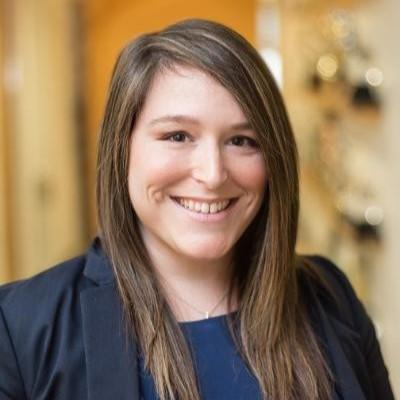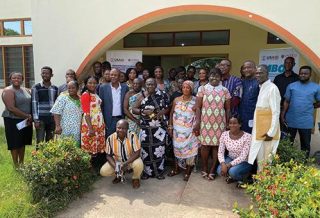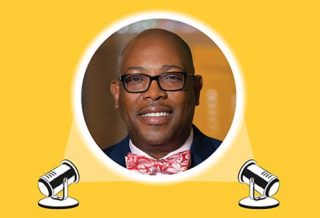FOCUS
Teacher voice drives improvement in Baltimore
By Zachary Jaffe and Amiee Winchester
Categories: Continuous improvement, Improvement science/networks, Teacher leadershipApril 2023
Matt Edelman, a high school English teacher in Baltimore, Maryland, needed to find a way to encourage his special education students to stay engaged, especially while they were working independently with difficult grade-level texts. He started by tracking students’ behavior with a points sheet — a typical teacher response to off-task behavior in which the teacher provides rewards or sanctions based on how many points students receive. But Edelman found this approach to be punitive and led to less engagement from his students, so he began tweaking it.
Maybe there should be an end-of-the-week incentive? Or maybe points should be awarded only when tasks are completed? Maybe student reflections on their behavior would work? Edelman tried all of these adjustments, noting the impact on his students’ reading engagement each time, until he came up with the version he’s using now — a flexible check mark system that allows the teacher to adjust the look-fors on the fly and for students to monitor their own level of focus.
Through these adaptations, Edelman has learned that the carrot-and-stick approach of a teacher offering points for good behavior was much less effective in engaging students in reading activities than a student-driven tool that empowers them to self-regulate.
How did Edelman learn to approach his teaching practice with such a spirit of inquiry and perseverance through initial failures? He is a member of the Baltimore Secondary Literacy Improvement Community, a teacher fellowship with two goals: to develop pedagogy that supports the reading and writing skills of middle and high school students and to develop teachers’ skills and habits in continuous improvement — behaviors that empower them to drive their own professional learning.
The Baltimore Secondary Literacy Improvement Community began in 2019. At that time, over one-third of incoming 6th graders in Baltimore City Public Schools were not showing mastery of foundational phonics skills as measured by the i-Ready reading assessment. A team of us from the Baltimore City Public Schools district office set out to change this pattern by working with literacy coaches and administrators to use the methods of continuous improvement to better understand the root causes of the literacy skills gap and develop and investigate possible solutions to these complex problems.
Teachers must be involved in the work of continuous improvement. Closest to students, teachers are perfectly positioned to test and refine change ideas. @zjaffe_teacher #TheLearningPro Share on XWe quickly learned that we also needed to involve teachers because they are the educators who work most closely with students and would be able to test change ideas more directly and rapidly without some of the competing priorities that absorb school leaders’ attention.
To accomplish this, we added a teacher fellowship for middle and high school teachers during the 2020-21 school year. We created a collaborative space for an initial group of 21 teachers to engage in similar learning as school administrators and coaches and then run their own investigations into literacy best practices that could make a difference for their students.
In our careers as teachers, we (the authors) both had experienced one-shot professional development that scarcely made an impression. With the Baltimore Secondary Literacy Improvement Community teacher fellowship, we wanted to avoid that all-too-common trend, and we aimed to build a structure that would embody the principles of high-quality professional learning.
In particular, we focused on creating a collaborative approach to ongoing learning that elevated teachers’ expertise and voice. In our experience, teachers value opportunities to drive their own growth, and we wanted to support their development as improvers — professionals who can investigate a system, develop research-based change ideas, and implement iterations of those change ideas, paying close attention to evidence of their success and areas in need of adaptation.
In just a few short years, this fellowship has made tangible differences. Teachers have discovered how to help students improve their reading skills and students are reading more fluently and successfully. Middle school students taught by our teacher fellows were able to, on average, double their fluency percentile according to national norms. In addition, we saw greater-than-expected improvements in reading scores among 6th and 7th graders: Students of the Baltimore Secondary Literacy Improvement Community teachers grew an average of five points more on the i-Ready reading assessment than other students in the district.
Teachers driving improvement ideas
Literacy coaches advertised the fellowship at their school sites and made recommendations of teachers who had a curiosity for more deeply exploring the system of secondary literacy. Recommended teachers went through a two-step application process: First, applicants submitted a resume and letter of interest, then they participated in a panel interview. The initial group of 26 participating practitioners, each of whom received a stipend, represented 13 middle and high schools. The fellowship has continued to grow, retaining about 80% of its participants from year to year — during the 2022-23 school year, there are 41 participants across 19 schools.
The original group of fellows was divided into five smaller groups, with each group investigating a discrete area of instruction: phonics, fluency, vocabulary, writing, and student engagement in the virtual learning environment (because school operations had now been thrown into a chaotic new world by the COVID-19 pandemic).
Teachers meet every two weeks to learn together, develop evidence-based ideas to test out in their classrooms, reflect on their learning with their network community, share ideas about what’s working, and brainstorm solutions to problems. Above all, they investigate their own classroom practices in a disciplined way to understand whether the changes they try out are, in fact, improvements.
In this structure, they learn how to conduct PDSA (plan-do-study-act) cycles. They also learn from literacy experts about how to support their students’ growth. For example, teachers in the fluency group were able to map out step-by-step protocols for fluency instruction with the guidance of reading expert David Liben.
Because the fellowship is ongoing, we continually bring in just-in-time learning as teachers’ strategies evolve. For example, in April 2022, Tim Rasinski, professor of literacy education at Kent State University, spoke to the fluency group about ways to add in more effective comprehension support.
Teachers are engaged in cycles of constant iteration and adaptation to understand how improvement occurs across different classroom contexts. For example, fellows who teach English learner students adapted their fluency routines to include more intensive vocabulary instruction. A reading intervention teacher combined aspects of several fluency routines to build students’ skills over the course of a week. A high school chemistry teacher figured out the parts of the fluency routine that are important to emphasize with students who only see her every other day.
Over time, fellows start to see themselves as researchers, able to adjust their practices in response to their classroom experiences, then share what they have learned with all the other teachers. Because fellows are encouraged — indeed, expected — to make adaptations to the baseline ideas in response to data, teachers own their improvement more than they do when given someone else’s program to use.
A student-centered approach to data
A crucial component of the fellowship is its focus on the practical use of day-to-day classroom data. We have all heard the call to be data-driven or data-informed in our practice, but, too often, school and district leaders pay little attention to presenting data in a way that empowers teachers to take meaningful action.
For example, we spend a lot of time packaging the results of monthly assessments (DIBELS 8 oral reading fluency) in a way that allows teachers to reflect on the variations they are seeing among their students and connect these variations to their specific classroom practices.
This feels very different to our teachers than the usual review of standardized test scores. As Brian Snook, a middle school English language arts teacher, says, “This is a way of documenting and tracking the data so that you can have data-driven improvement, and it gives you solid evidence of what worked and didn’t work. Even when it doesn’t work, you have evidence of why it didn’t work.”
Beyond assessments of learning, teacher fellows collect two other types of data to inform their decision-making: implementation data and student empathy interview data, which they document in a standardized Google spreadsheet. The implementation data helps teachers learn about what’s working.
Empathy interviews help teachers understand not just what’s working, but why it’s working. #TheLearningPro @zjaffe_teacher Share on XThey document what they are able to do: How many days were you able to implement a fluency routine? How long did it take? Which students were absent during those times? From the first time reading a curriculum passage to the fourth time, how much faster and more accurately did your students read it?
“This is a different type of data than I’ve used in the past,” says Jessica Harrington, a middle school English learner intervention teacher. “These small pieces of data give us more insight into a student’s needs than the standardized scores because it is real-time data. We can adapt and change to meet the needs of students as we monitor their progress each week.”
Teachers regularly check in with their students through empathy interviews — in-depth conversations focused on how the students are experiencing changes in their learning. They ask them about their confidence as readers, their feelings about the monthly assessments, the learning they take with them to other classes, and many other things. This kind of conversation can help us remember to put students’ perspectives at the center and design improvements with them, rather than imposing new strategies on them.
Gina Le, a former high school English teacher and fellow, says, “Being more intentional about listening to students and collaborating on the process of learning and trying new ideas made me slow down and not jump into solutions, which was valuable for addressing student needs.” She added that she wishes she had conducted empathy interviews more often.
Over time, examining these data sources helps teachers learn to give more ownership of the improvement process to their students. For example, Seth Hamrick, a middle school English language arts teacher, had a couple of options in mind for how to structure his students’ personalized learning time, but he knew that he should talk to his students about what would work best for them before deciding on a one-size-fits-all plan.
“I allowed them to choose from two options — independent reading or blended learning with an online platform,” Hamrick says. “I recorded at the start of the trimester who is doing which activity and will track any trends or differences in their data at the midyear reading assessment. My intention is to have students look at that data as well and make decisions about what they will do for their independent work for the rest of the year.”
When teachers like Hamrick can share the ownership of the improvement process with students, it will lead to a more equitable improvement journey. Brandi Hinnant-Crawford, associate professor at Clemson University, said it best in her February 2022 appearance on the High Tech High Unboxed podcast: “The users have more to give you than to help you define the problem. And there requires a significant amount of humility in the sharing of power for the improvement process to be equitable.”
A community that learns from failure
This work is not always a linear process. As leaders of the teacher fellowship, we constantly repeat the continuous improvement mantra that what we are doing is “possibly wrong and definitely incomplete.” We do this to break down the mental barrier that schools’ cultures of accountability pose to trying new things. We want to open up a space where everyone understands that failure is necessary as we learn our way to more equitable learning experiences and outcomes for students.
Opening up this space is crucial for teachers to view their profession with a growth mindset instead of feeling they have to project an aura of unrelenting success to their leaders. When teachers have a growth mindset, they persist through the initial difficulties that come with trying new instructional techniques, leading to greater long-term success.
The network structure of the fellowship creates a sense of belonging to a community of improvers, which reduces barriers to trying something new. Teachers feel they are learning from the struggles of those who have come before them and who learn alongside them. Snook says, “Collaborating every other week was helpful, especially getting ideas of what was working for others. It was especially helpful to collaborate when things didn’t work. I was worried I would be the only one struggling, but it helped to see others struggling and learning what works and doesn’t work.”
And, because teachers are always bringing their results back to the rest of the fellowship, they multiply their learning by spreading good ideas. As Hamrick says, “[Baltimore Secondary Literacy Improvement Community] is an opportunity to improve my individual practice, but also an opportunity for being part of something larger. It’s really compelling to be part of something that could impact other classrooms in the city.”
English learner interventionist Erin Lowry has introduced PDSA cycles to her school’s team of 17 English learner teachers, building, as she puts it, “teacher buy-in, choice, and agency for improvement investigations of their own” beyond her own practice.
Impact on teacher practice
We have found that the teacher fellowship structure promotes teacher growth by giving teachers ownership over their content learning, empowering them to use data that is meaningful to the decisions they must make for their students, and cultivating a growth mindset around their teaching practice.
This is important not only for the teachers themselves, but also for promoting the narrative of teachers as highly capable professionals who, when given the right tools and the space to inquire, can take charge of their own professional learning.
Many of our teacher fellows are applying the principles of continuous improvement learned in the Baltimore Secondary Literacy Improvement Community to other areas of their practice. For instance, high school teacher Matt Edelman has applied what he has learned not only to literacy instruction but also to classroom routines, such as the tool for students to self-monitor their focus levels described at the beginning of this article.
Erica Robbins, a middle school English language arts teacher, is also committed to tracking and using data outside of the fellowship: “I now see the value in capturing data immediately because I can get a clear picture of student progress, pacing, and frequency. I am able to give immediate feedback, track student growth to better determine small groups and scaffolds, and reflect on how to improve writing instruction.”
Our experiences with the teacher fellowship have helped us understand how we can improve student achievement by taking a continuous improvement approach that puts teachers in the driver’s seat. This approach helps teachers embrace the mindset of persisting through early failures. They no longer expect new ideas to lead to immediate improvement but know that, with effort and an inquiry stance, they can succeed.
As Matt Edelman puts it, “Trying to do small things well and measure them carefully and open up about challenges is super powerful. Once you move from the mindset of accountability to growth, everything begins to shift. It’s a whole different ballgame.”
Download pdf here.
Do small things well, measure them carefully, and adopt a growth mindset. Collaborate with others. This is what data-driven improvement looks like. #TheLearningPro @zjaffe_teacher Share on XCategories: Continuous improvement, Improvement science/networks, Teacher leadership
Recent Issues
WHERE TECHNOLOGY CAN TAKE US
April 2024
Technology is both a topic and a tool for professional learning. This...
EVALUATING PROFESSIONAL LEARNING
February 2024
How do you know your professional learning is working? This issue digs...
TAKING THE NEXT STEP
December 2023
Professional learning can open up new roles and challenges and help...
REACHING ALL LEARNERS
October 2023
Both special education and general education teachers need support to help...












